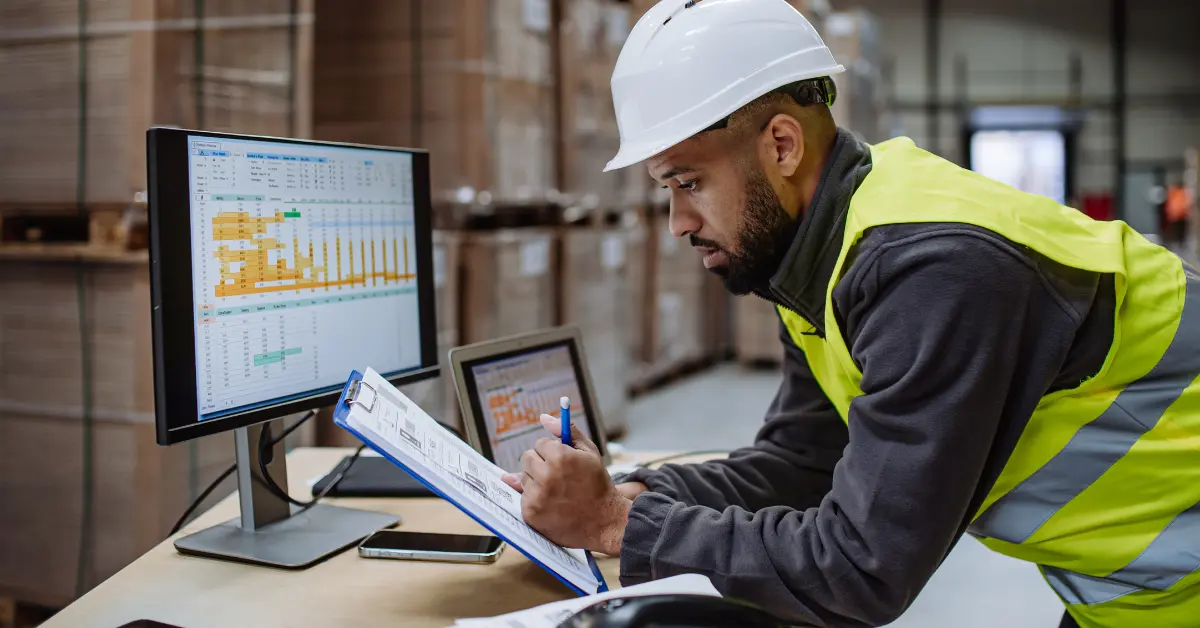Running a successful business, regardless of the industry, hinges on establishing trust and credibility with both your employees and customers. One of the most effective ways to build this foundation is by demonstrating a true commitment to safety. A well-designed Safety Management System (SMS) isn’t just about compliance; it’s the backbone of a safe, productive, and thriving workplace. In today’s world, taking a proactive approach to safety can make all the difference.
Partnering with professionals in EHS consulting can further enhance your safety strategies, ensuring that your SMS is robust and effective.
While many talk about “safety culture,” a true safety culture stems from a robust Safety Management System. This comprehensive guide covers everything you need to know about developing an SMS, its benefits, and how it drives continuous improvement in safety performance. We’ll also explore the valuable role safety consultants play in this process.
What is a Safety Management System (SMS)?
A Safety Management System (SMS) is a systematic approach that helps identify, manage, and mitigate safety risks within an organization. Think of it as the control center for workplace safety. Instead of simply reacting to accidents after they occur, a well-implemented SMS helps you stay ahead by uncovering potential hazards and preventing them from becoming serious issues.
The 4 Components of an SMS
The International Civil Aviation Organization (ICAO) defines four major components that create a framework for a solid SMS. While initially designed for the aviation industry, these components have been widely adopted across various high-risk sectors.
1. Safety Policy and Objectives
This is where it all begins – with a clear and concise safety policy. It outlines your company’s commitment to safety and spells out the goals you want to achieve. Think of it like your company’s safety mission statement.
It’s not enough to just have a policy documented. To foster a genuine safety culture, safety must be ingrained in everything your organization does. To establish a culture of safety, you need to define clear safety objectives, responsibilities, and accountabilities. These should be for everyone, from the CEO down to front-line employees.
The sample safety policy statement from FAA Advisory Circular 120-92B can be adapted to meet the needs of an individual organization. Actively encourage employees at every level to participate in making the workplace safer.
2. Safety Risk Management
Safety risk management boils down to being proactive. This stage focuses on identifying, assessing, and controlling risks that could jeopardize worker safety. Think of those potential safety risks that pop up on a project – everything from slips and falls to exposure to harmful substances. These are good reminders for employees. Some typical hazards related to human error are:
- Time pressure.
- Shift turnovers.
- Lack of system knowledge.
Safety risk management is a process all on its own, too. The process includes:
- System/Task Analysis: Break down your operations, step by step. Figure out the what, where, when, and how of each task. Document potential hazards associated with every step in the process. This documentation should be stored in a unified repository where workers can easily access it.
- Risk Analysis: Once you know what you are dealing with, accurately estimate the likelihood of something going wrong and the potential consequences if it does. The more severe the consequence, and the higher the likelihood of it happening, the more important it is to implement effective risk controls.
- Risk Assessment: Prioritize which risks deserve your attention first. A handy tool often used in this step is the Risk Matrix. The FAASTeam provides an illustration of how to use a Risk Matrix. Basically, it helps visualize and prioritize risks. Imagine you’re looking at a simple grid. You’ve got the likelihood of the risk happening plotted against the severity if it does happen.
- Risk Control: The goal here is putting measures in place to reduce those risks to a tolerable level. This is important when seeking more than just compliance with safety regulations but striving to create a truly safe working environment.
3. Safety Assurance
So you’ve identified your risks, put controls in place, and communicated everything to your team. Now what? You don’t just set it and forget it. That’s where safety assurance comes into play. It’s all about evaluating how well those controls are actually working in the real world. Are people actually following procedures, or are they finding “better” faster ways to get the job done that introduces risks to the process?
This ongoing evaluation is often done through:
- Regular inspections.
- Audits – are safety policies being followed, do those procedures even make sense from the workers point of view?.
- Employee reporting – the better your safety culture, the more comfortable workers will feel about raising safety concerns.
- Reviews of safety data – Are near-misses on the rise? This is crucial because the information collected helps make decisions on what needs tweaking. Maybe it’s more training or a different approach entirely.
4. Safety Promotion
Creating a safety-first culture isn’t just about rules and procedures – it’s also about communication and education. A successful safety management system actively promotes safety awareness across the board by providing relevant training. Safety promotion involves sharing important information about safety procedures, best practices, and lessons learned from incidents. It also encourages workers to actively participate in identifying hazardous working conditions and suggesting improvements.
Benefits of a Robust Safety Management System
An effectively implemented Safety Management System is key to creating a workplace where everyone feels safe and valued. It leads to fewer accidents, which boosts employee morale and reduces operational costs. Additionally, a strong SMS can enhance brand reputation by demonstrating corporate social responsibility.
Here are some key benefits of a robust SMS:
• Fewer Workplace Accidents: Proactively managing risks leads to a safer work environment with fewer incidents.
• Improved Employee Morale: When employees feel safe, they are more likely to be engaged and productive.
• Reduced Operational Costs: Lower accident rates translate into reduced insurance premiums and fewer regulatory fines.
• Enhanced Brand Reputation: A strong commitment to safety improves your company’s image, making it easier to attract and retain customers and talent.
The Role of Safety Consultants
Sometimes, an external perspective is necessary to refine your SMS. Experienced safety consultants provide guidance and support in designing and implementing an SMS that truly makes a difference. Their services often include:
• Risk Assessments
• SMS Implementation & Training
• Emergency Response Planning
By leveraging their expertise, safety consultants can help your business enforce control measures and provide effective risk-based decision-making, ensuring that your SMS is as effective as possible.
FAQs About Safety Management Systems
What are the four basic functions of an SMS?
• Planning, Organizing, Leading, and Controlling.
What are the four pillars of an SMS?
• Safety Policy and Objectives, Safety Risk Management, Safety Assurance, and Safety Promotion.
Who is required to have an SMS?
• Industries like aviation, energy, maritime, and construction are typically required to have an SMS. Even if not legally required, a proactive SMS can reduce accidents, downtime, and costs, providing a competitive advantage.
What are the four P’s of safety management?
• Perception, Prediction, Prevention, and Performance, emphasizing personal accountability within the system.
Building a Safer Workplace: The Power of a Safety Management System
In today’s competitive business environment, a comprehensive Safety Management System is not just a regulatory requirement; it’s a strategic advantage. It serves as the foundation for cultivating a workplace culture that prioritizes safety and ensures the well-being of all employees. Implementing an effective SMS is not a one-time task—it’s an ongoing process that requires continuous attention and improvement.
By proactively managing safety risks, you not only protect your workforce but also position your company as a leader in safety excellence. Whether you’re in a high-risk industry or simply looking to enhance your safety protocols, an SMS is an invaluable tool for achieving long-term success.
Contact us today to take the first steps to a safer workplace.







